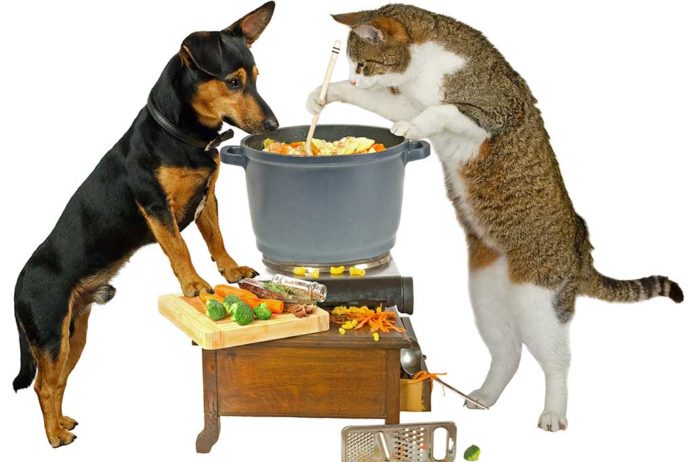Spicing Up Your Pet’s Kibble:
Why It’s Important To Add More Than What’s In The Bag
By Laura Amiton , The Filling Station Pet Supplies
If you’re like the majority of pet owners, you are likely feeding your dogs and cats dry food, known in the pet food trade by the generic name kibble. There are advantages to feeding kibble; it’s the most affordable way to feed your pet and it’s very convenient.
As a pet owner, many of us believe that once we find a food that our pet’s like and do well on, that we shouldn’t change. We may worry about stomach upset or our pets’ not liking anything else. For most of us, we simply keep our pets on what appears from our perspective to be working well.
But how do we know that the kibble in the bag is all our pet needs? And how do we know if or how to make changes? For most pet owners, the idea of changing our beloved pets’ food brings some sort of confusion, perhaps even anxiety.
To answer this, we have to acknowledge that cats and dogs are carnivores designed to eat raw prey. Being carnivores they lack the enzyme Amylase in the saliva in their mouths. Amylase is responsible for breaking down carbohydrates and without it, our pets have to rely on their pancreas for all carbohydrate digestion and over time, this can be very taxing.
During the manufacture of kibble, carbohydrates are added to form its shape. Generally, kibble contains one or more of these carbohydrate binding components; potatoes and potato starch, peas and pea starch, rice, oatmeal, barley, corn and corn gluten, wheat and wheat gluten.
In addition, kibble is heated to a temperature that destroys the living enzymes in the food.
Over time, if our pets are not given added enzymes in their diet through supplementation, they begin to lack enzymes that are crucial to digestion and other metabolic activity.
What does this mean to our pets?
Symptoms such as weight gain, arthritis, shedding and loss of shine and luster to the coat may appear. Internally, enzyme deficiency can lead to life-altering, if not life-shortening conditions that we may not even recognize. We may accept that our pets are simply aging.
What can we do? Good news!
It’s easy to add enzymes!
Fresh fruits and vegetables contain lots of live enzymes. For dogs, blueberries, apples, melons, carrots, bok choy, kale and spinach are great to add to the diet. For both dogs and cats, fresh, raw muscle meat and organs such as liver, kidney, heart are excellent sources of fresh, live enzymes. Raw milk such as goat or cow, raw chicken or turkey necks, green tripe and bone broths provide excellent sources of fresh, alive enzymes. There are even powdered supplements you can sprinkle on their food.
Need more inspiration? Many pet supply stores have refrigerators or freezers stocked with quality, fresh supplemental products such as these to add to your pets kibble. So, start being creative and offer your pets more than what’s in the bag!
Laura Amiton is a Portland-area native and animal advocate who has dedicated her life to helping pets and their people. She owns two pet supply stores including The Filling Station Pet Supplies in Tigard. You can reach her at 503-352-4269 or laura@tfspets.com.






















